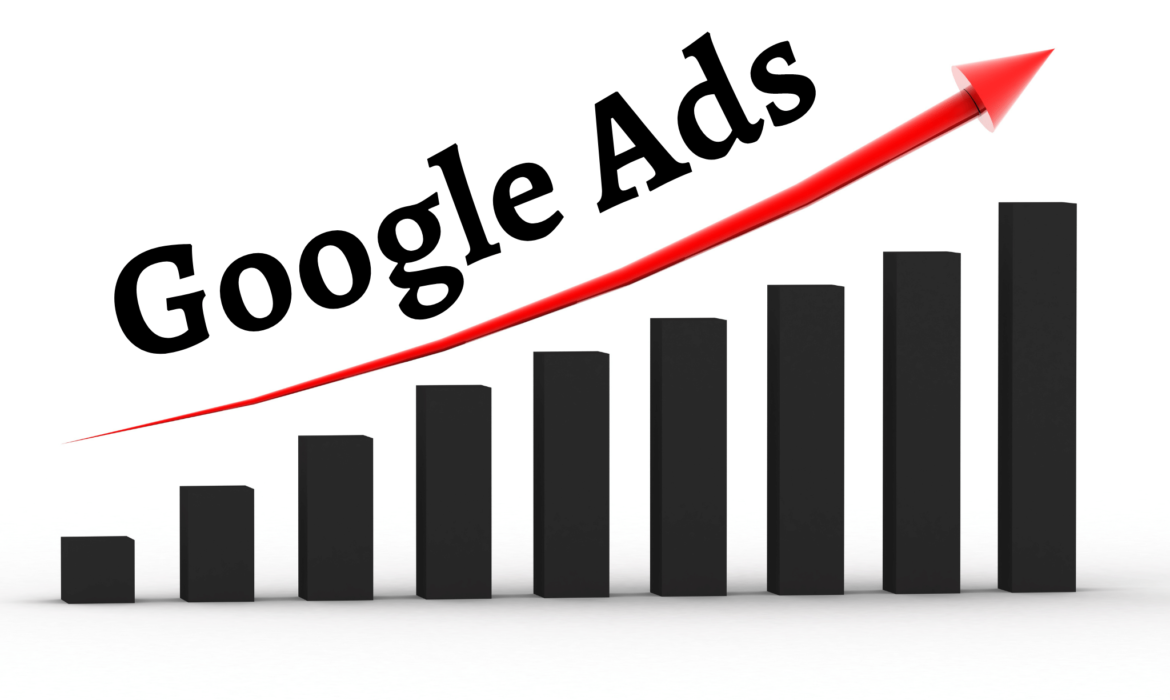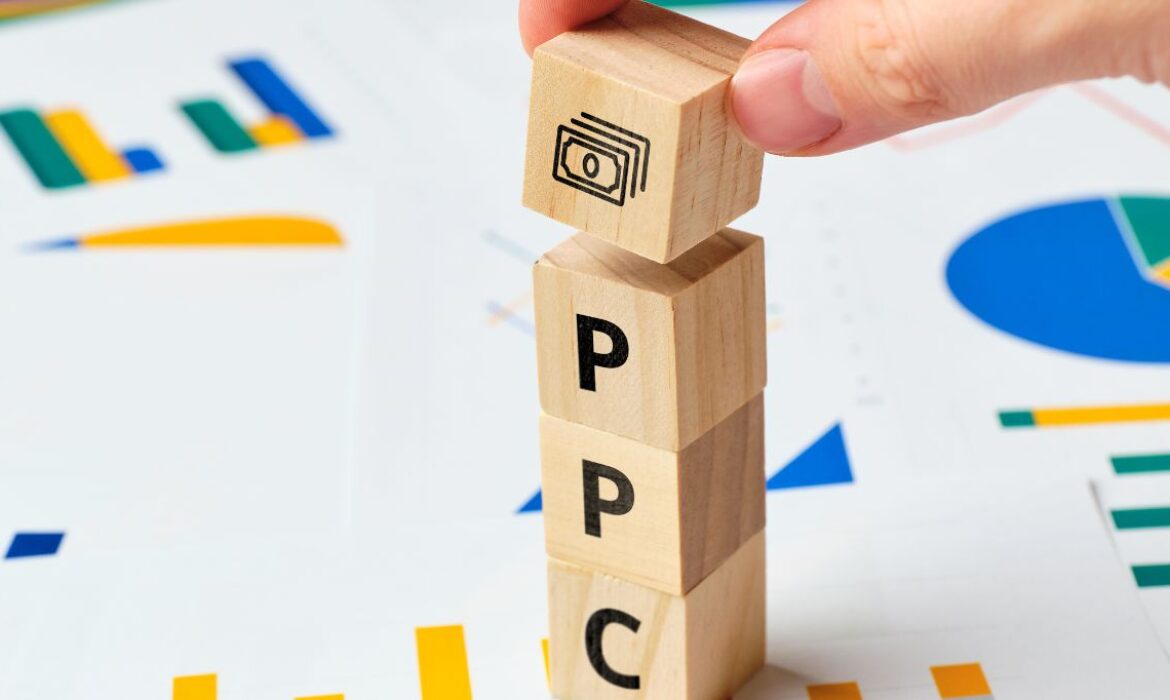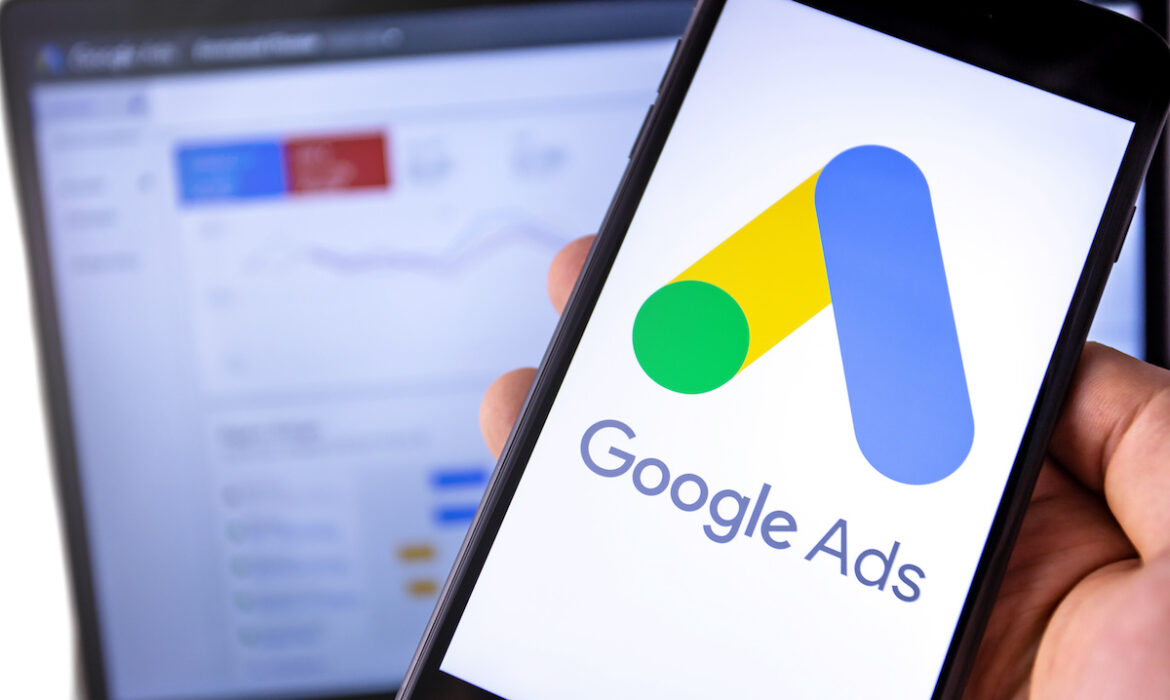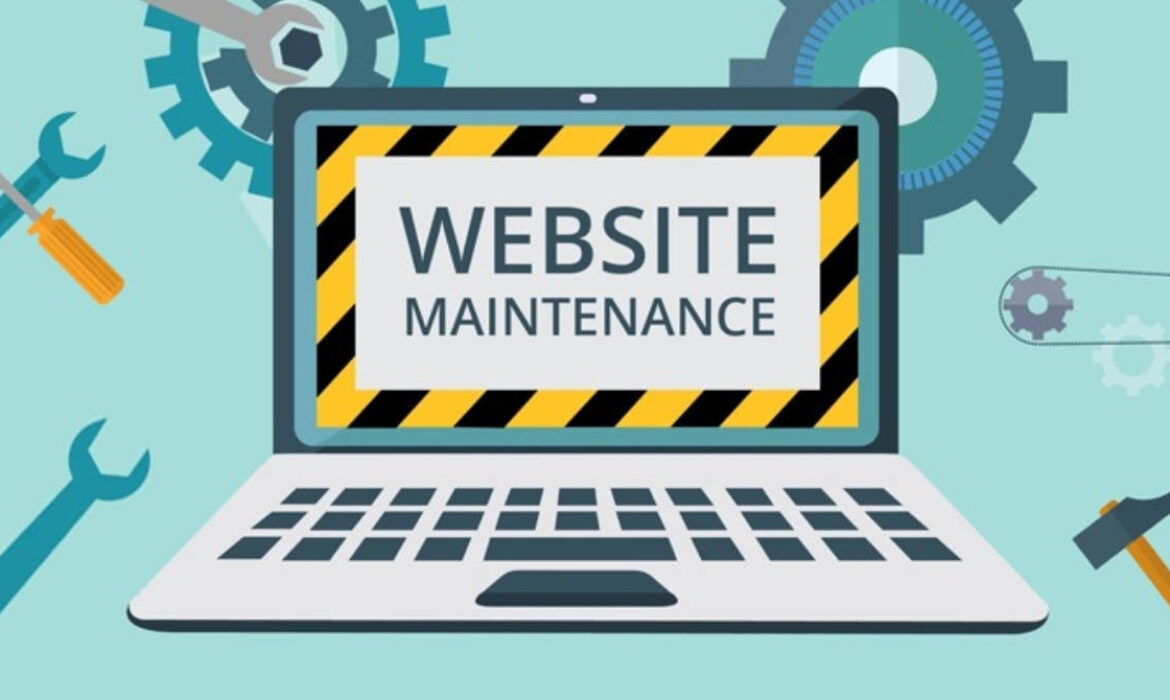Google PPC Services in Dubai to Drive More Leads and Sales
In today’s digital-first world, businesses need smart advertising strategies to stand out. One of the most effective ways to generate targeted traffic and increase conversions is through PPC services in Dubai to drive more leads. Whether you’re a startup or an established enterprise, leveraging Google PPC campaigns can significantly impact your business growth by attracting the right audience at the right time.
What Are PPC Services and Why Do They Matter?
Pay-Per-Click (PPC) advertising is a model where advertisers pay a fee each time their ad is clicked. This method allows businesses to bid for top positions on Google search results, instantly gaining visibility among potential customers. In Dubai, where competition across industries is fierce, PPC services provide an edge by ensuring your business gets in front of the right audience without waiting for organic rankings to improve.
Benefits of PPC Services in Dubai
1. Instant Traffic and Results
Unlike SEO, which takes time to show results, PPC campaigns can generate immediate traffic. Once your ad is live, potential customers searching for your products or services can see and click on it, leading to faster lead generation and sales.
2. Highly Targeted Advertising
Google PPC allows businesses to target audiences based on various factors such as location, keywords, demographics, and even user behavior. With the right strategy, PPC services in Dubai to drive more leads can ensure your ads reach the most relevant users, increasing the chances of conversions.
3. Budget Control and Cost Efficiency
One of the biggest advantages of PPC advertising is the ability to set your own budget. Whether you have a small or large budget, you can control how much you spend daily, ensuring cost-effective marketing with measurable ROI.
4. Improved Brand Visibility
A well-optimized PPC campaign ensures that your business appears at the top of search results, increasing brand awareness and credibility. Even if users don’t click immediately, repeated exposure to your ads can lead to conversions over time.
5. Advanced Performance Tracking
With Google Ads, you get detailed insights into your campaign performance. Metrics such as clicks, impressions, conversions, and cost per acquisition help businesses fine-tune their strategies for maximum efficiency.
How to Run a Successful PPC Campaign in Dubai
1. Keyword Research and Selection
Choosing the right keywords is the foundation of a successful PPC campaign. Conduct in-depth research to identify high-performing keywords that align with user intent. Long-tail keywords often have less competition and higher conversion rates.
2. Creating High-Converting Ad Copies
Your ad copy should be clear, concise, and persuasive. Focus on the benefits of your product or service, include a strong call-to-action (CTA), and highlight any special offers or unique selling points.
3. Landing Page Optimization
A well-designed landing page can make or break your PPC campaign. Ensure that your landing page is optimized for conversions with fast loading speeds, a compelling headline, relevant content, and an easy-to-use contact form.
4. A/B Testing and Optimization
Regularly testing different versions of your ads, landing pages, and CTAs can help determine what works best. Analyze performance metrics and make data-driven adjustments to maximize results.
5. Competitor Analysis
Keeping an eye on your competitors can provide valuable insights into effective PPC strategies. Identify what they’re doing well and find opportunities to differentiate your campaigns.
Choosing the Right PPC Agency in Dubai
While PPC advertising can be highly profitable, managing campaigns requires expertise and ongoing optimization. Partnering with a professional agency like Digital Oasis can help you get the best results. With experienced PPC specialists, data-driven strategies, and continuous monitoring, we ensure your campaigns achieve optimal ROI.
Conclusion
Google PPC services in Dubai to drive more leads offer a powerful way to boost business growth through targeted advertising. From instant visibility and budget control to advanced tracking and performance insights, PPC campaigns provide measurable results. If you’re looking to increase leads and sales, investing in a well-optimized PPC strategy is the key to staying ahead in Dubai’s competitive market.
Best Google Advertising Services in Dubai for Maximum ROI
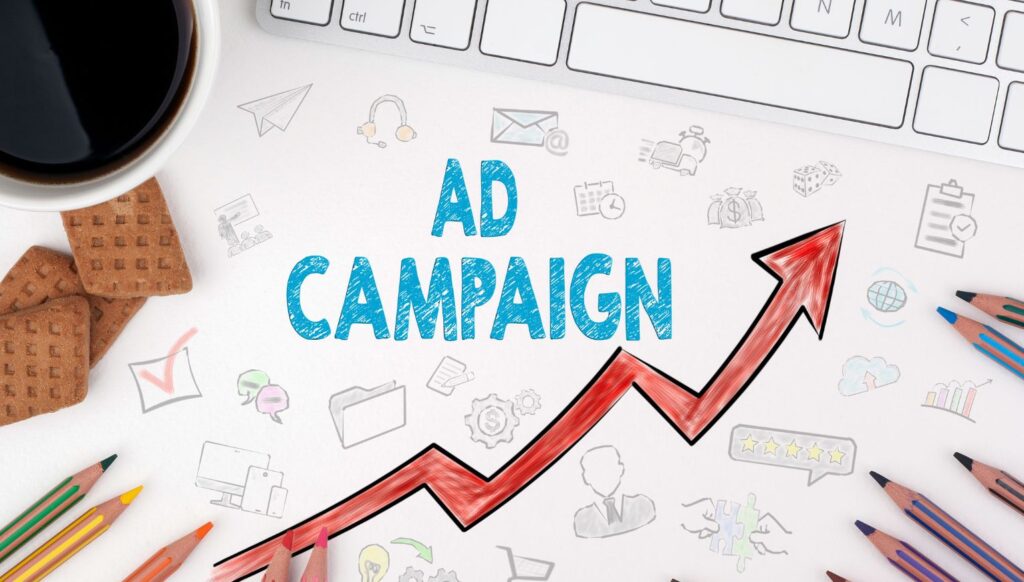
In today’s competitive digital landscape, businesses in Dubai are constantly looking for ways to stand out. One of the most effective strategies is leveraging Google Advertising Services in Dubai to reach potential customers and maximize return on investment (ROI). With Google Ads, businesses can drive targeted traffic, increase brand visibility, and convert leads into loyal customers.
Why Choose Google Advertising for Your Business?
Google Ads is one of the most powerful online advertising platforms, offering businesses the opportunity to appear at the top of search results. Unlike organic search engine optimization (SEO), which takes time to yield results, Google Ads provides instant visibility. This makes it a valuable tool for businesses looking for immediate traffic and conversions.
Benefits of Google Advertising Services in Dubai
Dubai is a fast-growing market with a highly competitive digital space. Utilizing Google Advertising Services in Dubai allows businesses to:
Reach Targeted Audiences – Google Ads enables precise targeting based on demographics, location, interests, and search intent.
Maximize ROI – With a well-optimized ad campaign, businesses can achieve higher conversions while keeping ad spending under control.
Flexible Budgeting – Advertisers can set their own budgets, ensuring they only pay for measurable results.
Real-Time Performance Tracking – Google Ads provides analytics and reports that help businesses fine-tune their campaigns for better outcomes.
Enhance Local Visibility – For businesses looking for Google Advertising Services near me, geo-targeting ensures they reach local customers efficiently.
How to Choose the Right Google Advertising Agency in Dubai
To get the best results from Google Advertising Services in Dubai, partnering with an experienced agency is crucial. Here’s what to look for:
1. Experience and Expertise
A reputable agency should have extensive experience managing Google Ads campaigns across various industries. Their expertise will help in crafting high-performing campaigns that align with business goals.
2. Data-Driven Approach
Effective Google Ads campaigns require continuous analysis and optimization. Look for agencies that focus on data-driven strategies to enhance campaign performance.
3. Transparent Pricing
A reliable agency should provide clear pricing structures with no hidden fees. Understanding the cost breakdown helps in planning a budget effectively.
4. Proven Track Record
Before choosing an agency, review case studies, client testimonials, and success stories to gauge their past performance.
Strategies to Maximize ROI with Google Ads
To ensure the highest return on investment, businesses must implement the following strategies:
1. Keyword Optimization
Choosing the right keywords ensures that your ads appear for relevant searches. Long-tail keywords often yield better conversion rates as they capture specific user intent.
2. Compelling Ad Copy
A well-crafted ad copy should be engaging, concise, and include a strong call to action (CTA) to encourage clicks and conversions.
3. Landing Page Optimization
Driving traffic to a website is only half the battle. Optimized landing pages with clear messaging and a seamless user experience significantly impact conversion rates.
4. Audience Targeting
Segmenting audiences based on demographics, behavior, and search history ensures ads reach the most relevant users.
5. A/B Testing
Running multiple ad variations and analyzing their performance helps in refining campaigns for better results.
Why Digital Oasis is the Best Choice for Google Ads in Dubai
At Digital Oasis, we specialize in providing top-tier Google Advertising Services in Dubai to help businesses achieve maximum ROI. Our team of certified Google Ads experts designs tailored strategies that align with your business goals. Here’s why we stand out:
Customized Campaigns – We create personalized ad strategies for businesses of all sizes.
Advanced Analytics – Our data-driven approach ensures continuous optimization for improved performance.
Transparent Reporting – We provide detailed reports so you can track your campaign’s success.
Dedicated Support – Our team is always available to assist and refine your advertising strategy.
If you are looking for Google Advertising Services near me, Digital Oasis is your go-to solution for impactful and result-driven Google Ads campaigns.
Conclusion
Investing in Google Advertising Services in Dubai is a game-changer for businesses looking to boost online visibility and drive targeted traffic. With the right strategy and an expert agency like Digital Oasis, you can achieve outstanding results and maximize your ROI. Ready to take your business to the next level? Contact us today to start your Google Ads journey.
Top Google Ads Services in Dubai to Boost Your Business

If you are looking for the best Ads Services in Dubai to Boost Your Business, this guide will help you explore top-notch solutions that can elevate your online presence.
Why Choose Google Ads for Business Growth?
Google Ads is a powerful platform that allows businesses to target potential customers based on their search queries, location, and browsing behavior. Whether you run a startup or a well-established enterprise, Google Ads services in Dubai provide measurable results with a high return on investment (ROI). The ability to track campaign performance in real time ensures that your marketing budget is utilized effectively.
Top Benefits of Google Ads Services in Dubai
Instant Visibility – Unlike organic SEO, which takes time to show results, Google Ads can place your business at the top of search engine results pages (SERPs) instantly.
Highly Targeted Advertising – You can target specific demographics, locations, and even user intent to reach the right audience.
Flexible Budgeting – Google Ads allows you to set daily budgets, ensuring you never exceed your marketing expenses.
Measurable Performance – With detailed analytics and insights, you can track the performance of your campaigns and make necessary optimizations.
Competitive Advantage – Staying ahead in Dubai’s competitive market requires a strong online presence. Google Ads give you an edge over competitors by capturing high-intent traffic.
How to Choose the Best Google Ads Services in Dubai?
Selecting the right agency for your Google Ads campaigns is crucial for success. Here are some key factors to consider:
1. Expertise and Experience
Look for agencies with proven experience in managing Google Ads campaigns across various industries. A reputable service provider will have case studies and testimonials showcasing successful results.
2. Customized Strategies
Every business is unique, and a one-size-fits-all approach doesn’t work. The best Ads Services in Dubai to Boost Your Business will offer customized strategies based on your industry, target audience, and marketing objectives.
3. Data-Driven Approach
An ideal Google Ads agency should leverage data analytics to optimize campaigns continuously. This includes tracking conversions, analyzing click-through rates (CTR), and making adjustments to improve performance.
4. Transparent Reporting
Transparency is key when choosing an advertising service. Ensure that the agency provides detailed reports, explaining key metrics and insights to help you understand your campaign’s progress.
Best Google Ads Services in Dubai to Consider
Dubai is home to numerous digital marketing agencies offering top-tier Google Ads services. Here are some of the best options:
1. Digital Oasis
Digital Oasis is a leading digital marketing agency in Dubai, specializing in result-driven Google Ads campaigns. Their team of certified experts creates tailored advertising strategies to maximize ROI and drive business growth.
2. Nexa
Nexa is a well-established digital agency that offers comprehensive Google Ads management, from keyword research to campaign optimization and performance analysis.
3. Be Unique Group
Known for its innovative advertising strategies, Be Unique Group helps businesses generate leads and increase online visibility through effective Google Ads campaigns.
4. Traffic Digital
Traffic Digital provides end-to-end Google Ads solutions, including search ads, display ads, and remarketing campaigns to target potential customers effectively.
5. Digital Nexa
With a focus on performance marketing, Digital Nexa delivers customized Google Ads solutions tailored to business objectives and industry trends.
Maximizing Your ROI with Google Ads
To get the best results from your Google Ads campaigns, follow these best practices:
Use High-Intent Keywords – Target keywords that match user intent to drive quality traffic.
Optimize Landing Pages – Ensure that your landing pages are relevant, fast-loading, and designed for conversions.
Leverage Ad Extensions – Utilize site links, call extensions, and structured snippets to enhance your ad visibility.
A/B Testing – Regularly test different ad copies and landing pages to determine what works best.
Monitor and Adjust – Keep track of campaign performance and make necessary adjustments to improve results.
Final Thoughts
Investing in professional Ads Services in Dubai to Boost Your Business is one of the most effective ways to achieve your marketing goals. Whether you are looking to increase brand awareness, generate leads, or drive sales, Google Ads can help you reach your target audience efficiently. Choosing a trusted agency like Digital Oasis ensures that your campaigns are managed by experts, maximizing your ROI and business success.
The Importance Of Google Ads For Dubai Businesses
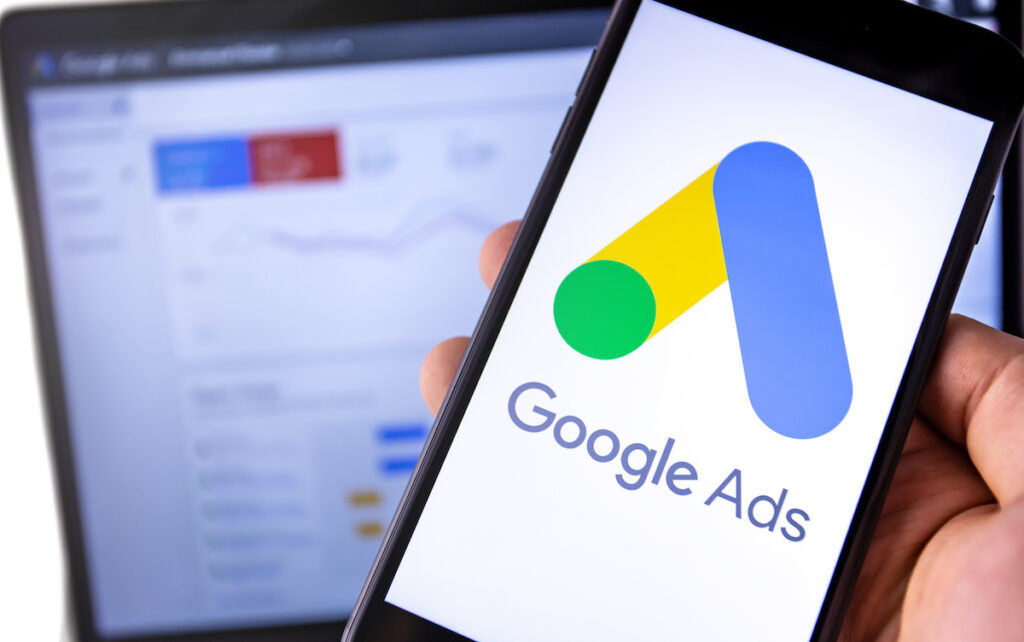
Why should Google Ads be part of your marketing strategy? Before explaining the importance of Google Ads for your Dubai business, can I ask, “Do you want to attract high-quality leads that will accelerate your business growth at a fast pace?”. Of course, like other businesses, you must be looking for ways to stand out and reach the right audience. So, let me explain how Digital Oasis assesses whether or not a company should be using Google Ads.
Why should you be using Google Ads? There are three main reasons:
- It’s very quick
- It helps you build a sustainable lead source for the long term
- The leads are of high quality.
The Power of Google Ads For Massive Reach
First off, Google has a massive reach. If you want to get in front of tens of thousands or even millions of people, Google is the way to go. Google’s search engine is the largest on the planet, and no advertising platform beats it in terms of size. It’s absolutely gigantic, and we can get in front of a huge number of people very, very quickly.
1. Sustainable Lead Generation
Google Ads can help you generate sustainable leads. Now, not every business will find Google Ads to be sustainable, especially if you’re in a niche with seasonal demand or if you’re located in a small area.
However, for many companies that work year-round, sustainability is never an issue. Google Ads has a consistent flow of people actively looking for products and services like yours, which means you can generate leads all year long.
2. High-Quality Leads
Now, here’s why I love Google Ads. It brings in high-quality leads. The cost per lead is generally average not too expensive, but not too cheap either. You get what you pay for, and if you’re after high-quality leads, I honestly don’t think there’s any better platform than Google Ads.
When you use Google ads for Dubai businesses, you reach out to people who display clear buying intentions. The search queries “HVAC company near me” and “pool installation near me” indicate that users want to purchase those particular services. Google Ads provides a clear indicator that people actively look for solutions because they explicitly click on your ad. This differs from social media advertising, where your guesses about their interest rate remain blind. By the time they contact you, they’re nearly at the decision-making stage.
Tips for Google Ads Success For Dubai Business
There are a few things I highly recommend when using Google Ads for your Dubai business to help you truly excel.
1. Have a Decent Profit Margin
Let’s get real for a second if you’re running a business with razor-thin profit margins, Google Ads might just laugh at you. Google’s click metrics are not here to mess around. If you’re selling a $50 product and your cost-per-click is $40, well, good luck paying the rent next month. Trust me, you’re not going to make a profit with Google Ads like that.
The key is to have a decent profit margin to cover not just the cost of the ad clicks but also the production costs and, of course, generate some actual profit. Our advice? Make sure you’re getting at least $1,000 in profit per customer. This gives you a cushion for optimization and keeps your account growing instead of crawling. If you don’t have that wiggle room, well, Google Ads could end up draining your wallet faster than you can say “ROI.”
2. Consider Your Industry and High-Profit Services
Now, I know you’re thinking, “But I just want Google Ads to solve all my problems!” Don’t we all? Unfortunately, it’s not that simple. Google Ads works wonders for high-margin industries like pool installation, where one job could have you laughing all the way to the bank. However, if you’re in an industry where every penny counts like baking, for example spending big on Google Ads might leave you staring at your ad spend like, “Why did I do this to myself?”
Low-margin industries can get caught in a vicious cycle. You end up spending all your profit just trying to get people to click on your ad and let’s be honest, that’s not exactly a business model for success. So, consider the nature of your industry before diving into the world of expensive clicks.
3. Diversify Your Marketing Strategies
Let’s talk strategy because just putting all your eggs in one basket, i.e., Google Ads, isn’t the smartest move. Don’t get me wrong, Google Ads is fantastic when done right, but it shouldn’t be your only lifeline. Think about it: relying solely on Google Ads is like saying, “Hey, I’m going to put all my chips on red and hope for the best.”
Instead, diversify! You know, mix it up. Direct mail might sound old-school, but it’s actually still really effective for some businesses. Need to reach older audiences? Newspapers might just be your golden ticket. You can get some pretty affordable advertising space in local or statewide papers and get in front of tons of eyes especially those with deeper pockets.
But don’t expect immediate results, though. Running ads for just a couple of weeks won’t give you the magic potion of success. You need to commit. I recommend at least six months of consistent newspaper ads to really start measuring your ROI. It’s all about playing the long game.
4. Utilize Social Media Power
Ah, social media the land of dreams and the occasional nightmare. Social media can be an absolute goldmine for generating organic leads, but only if you have the patience of a saint. Posting one or two pictures and waiting for the floodgates of business to open? Sorry, that’s not how this works.
For example, take one of our clients. Their YouTube channel has been running for two years. Yes, two years. They’ve been cranking out videos week after week. It takes time. If you’re not prepared to put in that effort, you’ll be left watching your competitors grab all the leads while you’re sitting there wondering why that one post didn’t magically change your business.
But when you do it right, social media can be amazing. Not only does it generate leads, but it builds trust and long-term relationships with your audience. And when you’ve already built that trust? Well, the sales process just becomes so much smoother. It’s like having the customer halfway to a purchase before they even click on your website.
A Word About Tools for Faster Campaigns
Now, if you’re looking to build campaigns lightning fast, check out our Google Ads Automatic Campaign Builder. It’s an absolute game-changer, and it allows us to create entire campaigns in less than 15 minutes. We use it for all our campaigns, and it makes the whole process so much easier. Digital Oasis also uses top-tier tools to ensure campaigns are up and running quickly while optimizing for the best performance.
Final Thoughts On Google Ads
Why should you use Google Ads for your Dubai business? If you need fast business growth through reliable leads and you want to target premium customers, Google Ads provides the best solution. Google Ads serves well for businesses with available finances and enough profit to generate fast target clients.
Digital Oasis helps businesses set up Google Ads according to their needs by managing every aspect to drive efficient results. Let us create your tailored Google Ads approach today if you want to begin advertising on Google.
Do you have any questions or concerns about whether Google Ads is right for your business? Drop us a message, and we will reach out to you.
Top 10 Digital Marketing Tactics to Drive Audience Engagement

Audience is a lifeblood of any brand. Without an audience, your every step seems useless. So, the important question is, “How do you create an audience engagement?”
At Digital Oasis, we experience different marketing strategies all the time. In this blog, we will share with you ten powerful marketing tactics that will help you build audience engagement, especially if you’re looking to sell digital products. You have ten tactics to explore, so you will never run out of ideas. No more excuses! Choose one and get to work. Let’s get started.
Tactic 1: Collaborating with Other Creators
Collaborating with other creators is one of the best ways to open the door to a whole new world of potential followers and customers. Here’s the thing: you don’t need a massive following to start. Look for partners who are just one step ahead of you. For example, if you have 200 followers, search for collaboration partners with about 1,000 followers. This helps you grow together.
The collaborations at Digital Oasis have generated substantial outcomes based on our company experiences. Small creators achieve increasing user engagement through teamwork with suitable collaborators that lead to expanded audience reach. We guide you toward contacting collaboration partners, which drive business advancement.
Tactic 2: Paid Advertising
Paid advertising allows you to reach your audience through a time-saving mechanism. You can hit your perfect audience through advertising options on Facebook and Instagram as well as YouTube and Pinterest platforms. However, remember that advertising is a skill. Like driving a race car, you need to learn how to handle the ad platforms. Take time to understand how they work before diving in.
Once you get the hang of it, paid ads can be a game changer. But here’s the thing: it’s not about throwing money at ads and hoping for the best. You’ve got to refine your targeting, create compelling content, and constantly tweak your approach based on what’s working. It’s a bit of trial and error, but once you’ve cracked the code, paid advertising can fast-track your audience growth like nothing else. Just make sure you’re prepared to put in the effort to master it!
Tactic 3: Social Media Promotion
Social media is a cornerstone of audience building. In today’s digital world, it’s a necessity, not a choice. Research and use data analysis to find out where your audience hangs out the most. Choose one or two social media platforms and start posting consistently. If you prefer reading, I have a blog post that accompanies this video, so be sure to check that out.
Digital Oasis strongly recognizes this basic principle, which consists of selecting suitable social media platforms along with suitable content for your requirements. The company helps its clients on Instagram and YouTube and niche social media platforms by creating optimized growth and retention strategies.
Tactic 4: Blogging & SEO
Blogging and SEO deliver gradual successes, although they establish enduring long-term benefits. Writing content looks similar to seed planting in a gardening setting. The enjoyment of writing creates a perfect opportunity to generate an audience that values your content through blogging. Your content value should either help others solve issues or entertain your readers effectively. Continuous value addition to your content ensures that your audience remains loyal to your work.
Tactic 5: Vlogging and Video Content
Video content serves as the right method for those who dislike writing. Video dominates content creation since viewers establish more profound connections through it. Viewers gain opportunities to personally interact with you through video. Thus, they form a stronger emotional bond.
Moreover, YouTube serves as an excellent platform for vlog production, and video ranking in Google search results allows for greater visibility because Google owns YouTube.
Tactic 6: Guest Blogging
Through guest blogging, you can connect with new audiences and demonstrate your position as an authority. Your content becomes available to the audience of other blogs when you choose to share valuable material. Your position as an authority increases through this method and enables you to establish credibility.
But remember that your content must contain real value along with absolute quality in every submission.
Tactic 7: Joining Facebook & LinkedIn Groups
The expansion of your audience begins through your membership in major Facebook and LinkedIn groups. Participation in such group gatherings lets you actively connect with members who share your mission. The number of members in a group is useful but superior to the group’s overall value. Smaller-sized groups should be your target because they enable active engagement along with providing value.
Tactic 8: Utilize Forums and Subreddits
Forums and subreddits are smaller communities within larger platforms where people discuss specific topics. Find ones that align with your niche, and focus on participating genuinely. Don’t just promote your products. Instead, add value and build relationships with the community.
Think of forums and subreddits like local coffee shops where people gather to chat about their favorite topics. You wouldn’t just walk in and start yelling about your business, right? The key is to hang out, listen to the conversations, offer advice, and genuinely help others. The more you engage with the community, the more they’ll start to recognize you as someone they can trust. So, it’s all about building those authentic connections eventually, the right people will be curious enough to check out what you’re offering!
Tactic 9: Becoming a Speaker at Virtual Summits or Online Conferences
Virtual summits and online conferences provide an opportunity for you to establish your expertise by speaking as an event participant. That’s why speaking at virtual summits or online conferences dynamically increases your credibility and overall visibility. Such events draw attendees from various international regions, which allows you to reach more individuals.
If summit appearances are not your goal, pursue different speaking engagements with podcasts or webinars to share your expertise with audiences.
Tactic 10: Creating a Shareable Giveaway
Sharing incentives works as a remarkable strategy to create email subscriber lists while delivering valuable content to your audience. You must provide valuable content to customers to exchange for their email addresses. Also, this strategy helps you acquire new followers by reaching clients who match the target audience for your digital products.
Moreover, create compelling messages coupled with visuals on your landing page, as you should reward participants when they share the giveaway with others.
Final Thoughts
You have 10 effective marketing strategies that enable you to create audience engagement. The trick generates thousands of followers but it does not work through finger snapping alone. The process of building an audience requires continued dedication and persistent work activities that need multiple months of active investment.
We provide supplementary assistance so you should give your time and resources to test these strategies. Digital Oasis exists to offer strategic assistance that will provide your business with a forward-moving competitive advantage. You can take advantage of team support to develop unique strategies as well as receive expert guidance on all your needs. Sounds pretty amazing, right?
So, what’s stopping you? You can explore these strategies to determine what suits you best and contact Digital Oasis. We have additional services that might streamline your journey.
And remember: your audience is out there waiting for you it’s time to go grab them.
How Can Influencer Marketing Grow Brand Awareness 2X Faster?
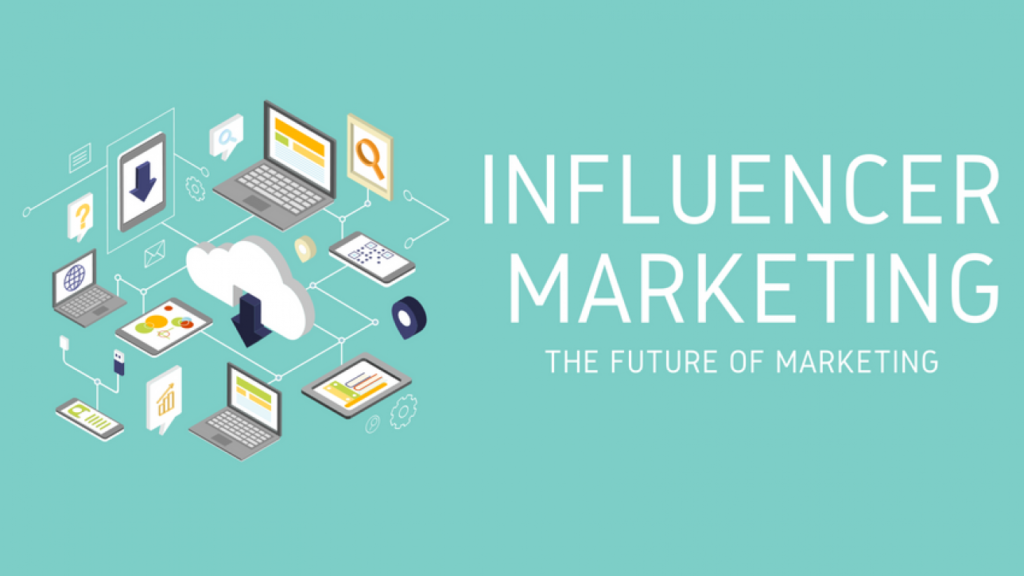
Want to know how to make people know about your company like crazy? Imagine that a huge group of influential people are pushing your product to a group of people who are already interested and trust their every word. Doesn’t that sound like a dream? That’s the truth of celebrity marketing. But the real question is how to use this powerful tool to increase your brand awareness?
Do you just pay influencers to share your post, or is there more to it than that? We’ll talk about how influencer marketing can help you get twice as many people to know about your brand and why it’s one of the best methods out there in this blog. Are you ready to begin? Let’s go!
What Exactly Is Influencer Marketing?
For better clarity, we need to establish basic definitions. The concept of influencer marketing exceeds basic payment methods to compensate followers with photo opportunities. The approach requires more strategic thinking than most people realize. It’s about collaborating with people who have a built-in audience—people who trust them, who hang on to their every word. The idea is simple: pay these people (the influencers) to promote your product or service to their audience. The goal? Brand awareness.
Why does your brand require awareness, according to you? For anyone building a profitable business, success requires people to understand that you are out there. And not just any random people—the right people. And that’s where influencer marketing comes in.
Why Influencers? Why Not Just Use Ads?
Here’s the deal. If you put an ad on Facebook or Google, chances are, the people seeing it don’t know you from Adam. They might not even care about what you’re selling. In fact, they probably don’t. Cold traffic, anyone? That’s a huge disadvantage. You’ve got to convince them of your value before they even think about clicking through to your store.
Enter influencer marketing. When an influencer talks about your product, it’s called “warm traffic. “The followers show loyalty to the influencer due to their established relationship regardless of their reputation level or social media reach. The followers base their trust in the influencer because they already know and like them. Their product suggestions create the feeling of personal recommendation from a friend instead of a generic ad.
Take Lena Damen, for example. Her Instagram account has 35,000 users who respond to her content by giving it 6,000 likes per post. Sure, she’s not a Kardashian with 50 million followers, but you know what? Her audience is engaged. They actually care about what she posts.
Isn’t that the dream? An engaged audience that doesn’t just scroll past your product like it’s an annoying ad popping up on a random website? Yeah, that’s the power of influencer marketing.
Warm Traffic vs Cold Traffic: Why You Should Care
Let’s be real. Would you rather cold-call someone who has zero interest in your product? Or would you prefer to show up on a feed of someone who already believes in the influencer promoting your product? The latter, right? That’s exactly why influencer marketing works. The traffic you get isn’t random—it’s relevant. People already trust the influencer, and by association, they’re more likely to trust you.
The best part? People will respond positively to your content when you select the right influencer. It makes sense to consider this logic. When Lena Damen shares her preferred skincare item on her page, only around 35,000 users will pause and say, “Hmm, I might need to check that out”? Probably a good chunk, right? That’s your warm traffic.
Life becomes challenging when you run a Facebook ad to sell the same product because your viewers cannot identify your brand. According to our experts’ observation, this scenario makes your marketing budget face a terrible situation.
Build Long-Term Relationships With Influencers
But influencer marketing isn’t just a one-and-done deal. If you want to grow your brand in the long run, you’ve got to think about building relationships with influencers and with their followers.
Here’s where it gets juicy. By working with an influencer regularly, you start building brand recognition. Every time they post about your product, their followers see it. Over time, it starts to stick. People might not buy on the first go, but after a few posts, your brand becomes familiar. And you know what they say: familiarity breeds trust.
Wouldn’t it be cool if, over time, the influencer became synonymous with your brand? Imagine a scenario where every time someone thinks of a high-end handbag, they think of Lena promoting it every two weeks. Now that’s some powerful brand loyalty, my friend.
Big Influencers vs. Small Influencers: Which Should You Pick?
We need to address the widespread wrong belief that exists today. Numerous individuals believe social media influencers who lack 100,000 followers do not carry meaningful influence. Let’s be real that’s not true. In fact, influencers with a smaller but more engaged audience often outperform the big names. Why? Because smaller influencers tend to have more personal interactions with their followers.
You know the saying, “It’s not about the size; it’s about how you use it”? Same applies here. If you pick someone with a few thousand followers but lots of likes, comments, and DMs, that person is far more effective than someone who has millions of followers but only a few likes. Why? Because engagement matters more than just the size of the audience.
So, next time someone tells you to go after the biggest influencer on the block, ask yourself does bigger always mean better?
The Price Tag: How Much Should You Pay?
I get it. You’re probably wondering, “How much am I going to have to pay for this influencer marketing magic?” Great question. It really depends. As we mentioned, Lena with her 35k followers probably charges between $100 and $250 per post. But here’s the thing—you can’t just throw money at an influencer and expect results. You have to consider their engagement and the value they bring to your brand.
Some influencers might offer fixed payments, while others may be open to commission-based deals or even just receiving free products. But don’t be that person who offers a $3 t-shirt from a sketchy online store and hopes an influencer will promote it. That’s not how this works. Influencers maintain their professional status, which leads them to demand fair payment regarding their work. The product quality combined with its relevancy to audience demands determines the final outcome you will receive.
Influencer Marketing Is Not Just About Sales, It’s About Branding
Here’s a secret—influencer marketing is more than just about making a sale. Any successful influencer marketing program must develop relationships among the audience base. The correct execution of this approach results in long-term advantages for both users and your brand awareness. The best part? The content that influencers create stays on their profile forever (unless they delete it). So when someone stumbles upon your brand later, they still remember it because it’s there.
Think about this: Facebook ads require constant funding to stay visible, but with influencer marketing, the content lasts. Isn’t that a win-win?
Let’s Wrap It Up
So, what have we learned? Influencer marketing expands brand awareness by tapping into engaged audiences, building trust, and creating long-term relationships. Your target audience exists in certain areas, so you need to appear there naturally but maintain complete authenticity in your approach.
Before moving forward with the first influencer who pitches to you, make certain their values align with your brand voice and their audience base will find them compelling. You want an influencer who genuinely buys into your product rather than one who would post promotional material without belief. If you took over as an influencer right now, would you choose to support your own product?
So remember that correct execution of influencer marketing builds a persistent and durable brand foundation that takes more than just a short period to develop.
Ready to give it a shot with Digital Oasis? Let’s make it happen.
Top Practices of Website Maintenance For Security and Performance
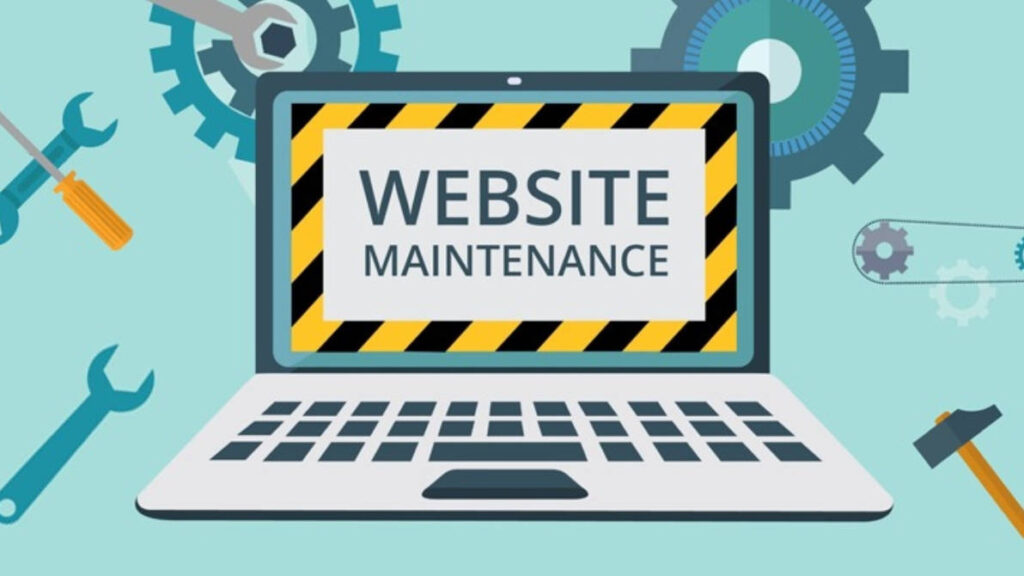
There are millions of you with WordPress websites, whether someone else built it or you did it yourself. But you probably want to know what needs to be done to keep your site running smoothly.
Digital Oasis built thousands of WordPress websites for the last 10 years, and we are hosting and maintaining those fully working and updated sites. That being said, in this post, I wanted to cover what I think are the most important tasks when it comes to maintaining a WordPress site. I’ll also show you some companies you can get them to take proper care of for you, and what these firms charge, and what you get in return. Stick around till the end because I’ll also share information about my own service.
1. Updating WordPress, Themes, and Plugins
One of the most common aspects of WordPress website maintenance is updating your WordPress theme, the software itself, and the plugins.
The update of your WordPress theme is based on whether you’re using a theme. Every theme developer has their own process, but many allow for quick, automatic updates. However, before updating, always make sure your site is backed up. When updates are concerned, especially to themes, sometimes it breaks things, it’s good to have a backup.
To check for updates, go to Dashboard > Updates to see what updates are available, including for themes. In my case, I’m using the Divi theme. I simply click “Update Themes,” and I’m confident it won’t break the website because I’ve updated it hundreds of times. Plus, I always have a backup ready.
For paid themes, you’ll usually need authorization, such as an API key or a username/password combination, to update the theme automatically.
2. Content Updates
For a WordPress site, you will need to update the content from time to time. All this involves changing the text, uploading new images, adding pages, or even playing with the design.
You can do these updates yourself if you feel comfortable, or you might need to hire someone. Some website maintenance companies include content updates as part of their service. For example, two companies I found charge around $78 to $200 per month for maintenance and offer updates to WordPress, plugins, and sometimes themes. Digital Oasis charges the same.
In the hosting and maintenance package of Digital Oasis, we include up to 2 hours of content updates per month for most clients, which works well for them.
3. Uptime Monitoring
Uptime monitoring makes sure the website is online and easily accessible. There can be lots of reasons for websites to go offline. Perhaps not the most common, but one of the more common, is not renewing your domain name. So, if it’s an active site, I suggest setting your domain to auto-renew.
Other causes of your site going down may be excessive bandwidth or storage limits. While uptime monitoring is not available with most of the companies, Digital Oasis provides it as part of their maintenance plans, and you can also install plugins or monitor your hosting provider’s uptime.
4. Backups
Backups are crucial for WordPress site maintenance. You want to make sure you have a backup in case anything goes wrong during updates. I’ve even made a separate video about WordPress backups, covering plugins and options from your hosting provider.
Some maintenance companies offer daily offsite backups, which is great in case something happens to your hosting server. For example, my own server offers multiple backup levels: one on the server, one offsite updated continuously, and a third backup offsite to Amazon Web Services (AWS). These are the kinds of backups that provide extra peace of mind.
5. Security Monitoring
Website owners are concerned about the security of website. While it is true that weak passwords are a frequent entry door to hackers, that’s not the only thing you can do to safeguard your site. Common exploits are completely secured at the server level in most of the hosting environment.
To secure WordPress-specific security, I suggest using the Word-fence plugin to block brute force attacks or malicious login attempts. Any maintenance package that is worth it needs to include a good security monitoring service to help protect your site from common threats.
6. Technical Support
Another important aspect of website maintenance is technical support. If you are the one managing your site, you may need more support for things that you cannot figure out by yourself. Basic hosting companies, such as GoDaddy or HostGator, are offering basic support but upon a limited scope if you are on a basic plan.
So many of the WordPress maintenance companies will grant you access to their support teams that are focused on WordPress. For example, Digital Oasis offers support via chat, email, and even phone calls. We offer our clients phone and email support with most tasks completed the same day or within 24-48 hours.
7. Reporting and Audits
Some maintenance plans also offer reporting services or even SEO audits. SEO (Search Engine Optimization) services are often expensive, so I wouldn’t expect much in terms of SEO with basic maintenance packages under $100 a month.
For reporting, I recommend setting up Google Analytics. This is a one-time setup fee that you can use to monitor your site’s performance. If you’re paying for a Google Analytics maintenance plan, then most of them are charging you per month for a service that you could set up yourself for a one-time fee.
8. Hosting
Hosting is sometimes part of some maintenance companies’ services and not others. When considering a website maintenance plan, you must know if hosting is included and what type you can get them for. Not all hosting is equal. In fact, the maintenance plan at Digital Oasis involves high-level professional hosting and dedicated servers for their client only. It guarantees your site’s loading happens on a fast, reliable server.
Want to Maintain Your WordPress Website Without a Hitch?
To finish up, WordPress maintenance is about keeping your site up to date, secure and backed up. The cost begins at about $50 per month for basic maintenance, or whether you do it yourself or hire a company to take care of it for you, it will run about that. If you don’t want to take the risk, you can find out what it will cost to use their service and compare which services they will offer, including updates, backups, uptime monitoring and security.
WordPress hosting and maintenance are things Digital Oasis offers at a cost lower than a lot of the companies. So, need help maintaining your WordPress site? Check out affordable hosting and maintenance plans of Digital Oasis to keep your site running smoothly.
How to Design a Successful Product Launch Strategy That Has Made Millions?

In recent years, we’ve designed and run several product launch strategies in e-commerce that have generated hundreds of thousands of dollars for our clients. Over the years, I’ve seen many different techniques to launch a product, and I’ve had the opportunity to go deep into this topic and figure out what works best. What’s the ideal timing for a launch? How long should the launch process last to get the best results?
Before we start, I just want to clarify the type of product launch I’m talking about here.
Two Scenarios Of Product Launch Strategy
The first approach is that your company maintains a strong brand identity along with its built-in email subscriber list. Your organization prepares to introduce a fresh product along with an event-based launch program. Merely listing your new product on website platforms and sending an email stating “We have a new product” will not be effective. When you establish a business goal, it should offer value to your customers through interesting content and produce earnings that support your company’s financial goals. That’s one approach.
Another option is launching a brand that doesn’t yet exist. In this case, you can use a product launch as a pre-order method to generate cash before the product is even created. This can also apply to any other type of business, not just e-commerce, because the strategy I’ll outline is based on psychology. The key is how you get from the point where a customer doesn’t know about your product to the point where they’re eagerly awaiting the email that gives them access to the product page to make the purchase.
Let me walk you through the process using a working document from a past launch. It’s a simple Google Sheets file with dates, email content, and associated actions that lead to the next part of the strategy. Let’s dive in.
Step 1: The Pre-Pre-Launch Email
The first email Digital Oasis always sends is the pre-pre-launch email. What does that mean? The main goal is to spark customer interest so the real product remains hidden until they want to learn more. I choose to send unclear pictures or ask perplexing questions through emails. I might create a quiz or something interactive that gets them thinking about what’s coming.
This email is short, intriguing, and should leave your customers wondering what the product is without actually telling them. For example, you could link them to a quiz or a short video. The point here is not to give everything away but to create curiosity so they’re eager for more.
Step 2: Complementing Social Media
For each of the first few emails, I recommend posting something related on social media. Your email list serves as a powerful tool that stimulates subscribers to follow your social media profiles and then interact with the content. New audiences discover your brand through the social media posts and had no knowledge of your brand before.
Your goal should be to synchronize your email subscriber pool with your social media audience because this combination enhances public awareness and audience engagement. For the first three emails in your product launch strategy, there should always be an email followed by a related social media post.
Step 3: The Big Announcement (Email #2)
By the second email, it’s time to go a bit deeper. Feel free to adjust the timing to suit your business. So, let’s say the first email goes out on a Sunday. A week later, the second email goes out, and this is when you make the announcement.
In this email, you finally reveal what’s coming but not the details like price or how to order. Instead, focus on the why. What motivates the launch of this product? You can share the creative process of your business along with describing the reason behind creating this specific product and your drive for introducing it to your clients. Your why behind product development and how it relates to your brand’s goals is a fundamental aspect of your product launch marketing strategy.
Step 4: The Product Reveal (Email #3)
In the third email, you’ll go into the what. After explaining the reason for creating your product (the why), you need to present an explanation of its features and how they solve customer problems (the what). The features together with their associated benefits make up your description at this point.
Until now, customers received only ‘Why’ about the product development. Now, they demand to understand the exact product features alongside their benefits that guarantee life-improvement. The essential point at this moment is to avoid discussing pricing information. The information about price does not belong at this moment because customers cannot handle it. Determine a detailed description of your product while creating enthusiastic anticipation through it.
For pre-order information, you should supply both the delivery timing and pricing structure with the delivery schedule to your customers. The customers acquire a complete understanding of the product through the third email while awaiting the last message to finalize their purchase.
Step 5: The Launch (Email #4)
Now, after several weeks of anticipation, it’s time for the final email the launch email. This is straightforward. There’s no fluff. You simply tell your customers that the product is now available, and they can go ahead and buy it from the product page.
At this stage, everything should be clear. They know exactly what they’re getting, when they’ll get it, and how much it costs. All that’s left is to click the link and purchase.
Step 6: Post-Purchase Email
After purchasing, it’s very crucial you send an email to your client post purchase. However, for pre-orders, this is especially necessary, as that is exactly what the customer will be looking for reassurance that whatever they purchased was worth it. After the purchase, the thank-you email should thank them for placing their trust in you and reassure them about the product’s delivery.
Extra Tips to Boost Your Product Launch Strategy
To make your product launch strategy even more successful, consider these extra strategies:
- Engage with New Leads: Offer a link in each social media post whereby people can sign up for more launch information. It helps you to build your email list while the campaign is on.
- Reminder Emails: On winning the campaign, send reminder emails to the people who haven’t opened previous emails or haven’t acted. During the last weekend, always send a reminder in the middle of the week and again at the end of the week.
- Two-Email Strategy: If you think that some emails are not emphasized enough, you could be a little less aggressive. In this case, you think that you should send another email a few days after that first one. Be aware that this is a bad idea, especially in the case of email tracking changes made by Apple.
Your Take On
Launching a product doesn’t have to be a rush. For Digital Oasis, we found that a one-month timeline is just the right amount of time; doing this is good enough to build a desire people have for the product but not so much that people start losing interest. You send emails in this time that tell stories and features of the product and work to create excitement with the product. By the end of the product launch campaign, your customers will be wishing to make a purchase seemingly without a delay.
Have questions or need help with designing your product launch strategy? Reach out to us, and let’s make your next launch a success!
How ERP Systems Streamline Business Operations
In today’s competitive market, businesses must continually adapt and optimize their operations to maintain efficiency and growth. One of the most effective ways companies can achieve this is by implementing ERP (Enterprise Resource Planning) systems. ERP systems integrate all core business functions such as finance, HR, inventory management, procurement, and customer relations into a unified platform. These systems allow companies to streamline business operations and make data-driven decisions that lead to enhanced productivity, reduced costs, and improved customer satisfaction.
What Are ERP Systems?
An ERP system is a comprehensive suite of applications that connects various business processes across an organization into a single system. From finance and accounting to supply chain and human resources, ERP systems ensure that all functions work together in harmony. This integration eliminates the need for isolated software or manual methods to track different aspects of the business.
Typically, ERP systems operate through a centralized database that provides real-time data to all departments. This means that employees across different teams have access to the same, up-to-date information, reducing errors and improving decision-making. It also helps ensure that operations are running smoothly and efficiently, as everything is automated and synchronized.
The core functionality of an ERP system varies depending on the needs of the business, but the central goal remains the same: to streamline processes and increase operational efficiency. By centralizing data, ERP systems can provide businesses with a clear view of performance across multiple areas, which can then be used to optimize day-to-day operations.
How ERP Systems Streamline Business Operations
One of the key reasons ERP systems are so popular among businesses is their ability to streamline business operations. These systems automate processes, integrate data, and optimize workflows, which significantly reduces the complexity of managing business tasks. Here are some of the ways ERP systems can streamline operations:
1. Centralized Data and Real-Time Access
ERP systems offer businesses the ability to centralize data across different departments. Rather than relying on various software tools or spreadsheets, all data is stored in a single database, ensuring that every team has access to the same information. This centralized approach eliminates the risk of data duplication or discrepancies, which can occur when different departments maintain their own separate records.
With real-time data available across the organization, ERP systems also empower decision-makers with up-to-the-minute insights. For example, an executive can easily access the latest financial reports, while the supply chain team can monitor inventory levels in real time. This improves decision-making speed and accuracy, contributing to more efficient business operations.
2. Automated Processes
Manual, repetitive tasks are a significant drain on time and resources. ERP systems automate a wide range of business functions, from generating invoices to managing payroll and updating inventory levels. By automating these routine processes, businesses can eliminate human error and free up employees to focus on more strategic tasks that require creativity and critical thinking.
For instance, when inventory levels are low, the ERP system can automatically trigger reorder requests to suppliers, preventing stockouts without the need for manual intervention. Similarly, when customer orders are processed, the system can automatically update inventory records and trigger invoicing, which saves time and reduces the chance of mistakes.
3. Enhanced Collaboration and Communication
Another key advantage of ERP systems is that they foster better communication between departments. Because all functions are connected within a single platform, employees in different teams can collaborate more effectively. For example, the sales team can access real-time information on inventory levels and product availability, which helps them manage customer expectations and improve sales strategies.
Moreover, the data provided by the ERP system helps different teams make decisions based on shared information. This eliminates the silos that often exist between departments and fosters a more cooperative work environment. When everyone is aligned, tasks are completed more efficiently, and the overall workflow becomes smoother.
4. Improved Customer Service
ERP systems can also enhance customer service, which is a crucial aspect of any business’s success. With an ERP system in place, customer-facing teams, such as sales and customer service, can access real-time information about order statuses, inventory availability, and financial details. This allows them to provide more accurate and timely responses to customer inquiries, improving the overall customer experience.
Additionally, ERP systems help businesses manage their customer relationships more effectively. By integrating CRM (Customer Relationship Management) functionalities into the ERP system, companies can track customer interactions, monitor sales progress, and identify opportunities for upselling or cross-selling. This not only helps retain customers but also drives revenue growth.
5. Cost Savings
ERP systems can contribute to significant cost savings by improving operational efficiency and reducing errors. By automating tasks, businesses can save time and reduce the number of staff needed to perform manual tasks. This can lead to a reduction in labor costs and increased productivity.
Moreover, ERP systems help companies optimize their supply chain management. By providing real-time visibility into inventory levels, orders, and shipments, businesses can avoid overstocking or stockouts, both of which can be costly. With better demand forecasting and more efficient resource management, companies can reduce inventory carrying costs and increase profitability.
6. Improved Financial Management
Effective financial management is at the core of any business, and ERP systems provide businesses with the tools they need to streamline their financial operations. From accounts payable and receivable to budgeting and financial reporting, ERP systems centralize all financial data, making it easier to track cash flow, manage expenses, and ensure compliance with tax and regulatory requirements.
Real-time access to financial data allows businesses to make more informed decisions about spending, investments, and overall financial strategy. Additionally, the automated features of an ERP system help eliminate human errors in accounting, reducing the risk of financial discrepancies and penalties.
How ERP Systems Can Help Scale Your Business
As your business grows, so do the complexities of managing operations. One of the major benefits of ERP systems is their scalability. Whether you’re expanding your product line, entering new markets, or growing your workforce, an ERP system can easily scale to meet the needs of your business.
ERP systems are modular, which means that you can add additional functionalities or integrate new business processes as your company evolves. For example, as your business expands internationally, your ERP system can be adapted to handle multiple currencies, languages, and tax regulations. This scalability ensures that your business operations remain efficient, no matter how large your organization becomes.
ERP Systems: A Competitive Advantage
By streamlining business operations, improving collaboration, and providing real-time data, ERP systems offer companies a significant competitive advantage. Businesses that adopt ERP systems can react faster to market changes, reduce operational inefficiencies, and make more informed decisions. With the ability to optimize resources and improve customer service, ERP systems ultimately contribute to increased profitability and growth.
For organizations looking to stay ahead of the competition, investing in an ERP system is no longer a luxury it’s a necessity. Whether you’re a small startup or a large enterprise, ERP systems provide the tools needed to streamline your operations and ensure long-term success.
Final Thoughts
At Digital Oasis, we specialize in helping businesses integrate ERP systems that align with their unique needs and goals. If you’re looking to streamline your business operations and optimize efficiency, contact us today to learn how we can help you implement the perfect ERP solution for your organization.
Product Photography Strategies for E-commerce Success

In today’s digital landscape, high-quality product photography plays a crucial role in e-commerce success. With customers relying heavily on visuals to make purchasing decisions, implementing the right Photography Strategies for E-commerce can significantly boost sales and brand credibility. Whether you are a small business owner or managing a large online store, investing in compelling product photography is a game-changer.
Why Product Photography Matters in E-commerce
Product images are the first impression customers have of your products. Unlike brick-and-mortar stores, e-commerce businesses lack the advantage of physical interaction. This makes high-resolution images essential for capturing details, enhancing trust, and influencing buying behavior. The right Photography Strategies for E-commerce can help businesses stand out in a competitive market, increase conversions, and reduce return rates by providing customers with accurate product representations.
Essential Equipment for Professional Product Photography
Investing in the right equipment ensures high-quality images that drive engagement and sales. Here are some must-have tools:
1. Camera
A DSLR or mirrorless camera with a high-resolution sensor ensures sharp and detailed images. For those on a budget, modern smartphones with advanced camera capabilities can also produce impressive results.
2. Tripod
A tripod stabilizes the camera and prevents blurriness. It is essential for maintaining consistency in angles and lighting across multiple product shots.
3. Lighting Setup
Proper lighting enhances product details and eliminates unwanted shadows. Softbox lights, LED panels, and natural light are commonly used in professional product photography.
4. Backgrounds and Props
Using clean, distraction-free backgrounds helps products stand out. White backgrounds are popular for e-commerce photography as they create a seamless and professional look.
5. Editing Software
Post-processing tools like Adobe Photoshop or Lightroom help enhance colors, adjust lighting, and remove imperfections, ensuring a polished final image.
Photography Strategies for E-commerce Success
Implementing the right techniques can elevate your product photography and increase customer engagement. Here are some effective strategies:
Optimize Image Composition
Composition is key to creating visually appealing product images. Follow the rule of thirds, ensuring that the product is well-positioned within the frame. Experiment with different angles to highlight unique features.
Use Consistent Branding
Maintaining a uniform style across all product images enhances brand recognition. Consistency in background, lighting, and editing creates a professional and cohesive aesthetic that resonates with customers.
Capture Multiple Angles
Customers want to see a product from all perspectives before making a purchase. Providing images from different angles, including close-ups of textures and details, increases confidence in the product.
Showcase Products in Use
Lifestyle images demonstrating products in real-world settings help customers visualize their usage. This strategy is particularly effective for fashion, home decor, and electronics, as it adds context and relatability.
Maintain High-Resolution Quality
Blurry or pixelated images can negatively impact sales. Uploading high-resolution images that allow customers to zoom in and examine details can significantly improve engagement and trust.
Implement 360-Degree Photography
For a more immersive shopping experience, consider using 360-degree product photography. This technique enables customers to interact with products by rotating them for a complete view, increasing purchase confidence.
Utilize Shadows and Reflections
Adding natural shadows or reflections gives products a more realistic appearance. These subtle details enhance the overall visual appeal and create depth in images.
The Role of Editing in Product Photography
Post-processing is a vital step in refining product images. Even the best raw photos require some level of enhancement. Here are essential editing techniques:
Background Removal: For a clean, distraction-free look, remove backgrounds and replace them with white or branded colors.
Color Correction: Ensure accurate color representation to avoid discrepancies between images and actual products.
Sharpness and Clarity: Enhance details to make textures and features more prominent.
Retouching: Remove imperfections, dust, or reflections to achieve a professional finish.
Leveraging Photography for Better Conversions
Implementing effective Photography Strategies for E-commerce does not end with capturing great images. Optimizing images for web performance is equally important. Here are additional tips:
Compress Images: Reduce file sizes without compromising quality to ensure fast loading speeds.
Use Descriptive File Names: Include relevant keywords in image file names for better search engine rankings.
Alt Text Optimization: Add keyword-rich alt text to improve SEO and accessibility.
A/B Testing: Experiment with different photography styles and analyze which images generate the highest engagement and conversions.
Final Thoughts
Mastering Photography Strategies for E-commerce is essential for attracting customers and driving online sales. By investing in quality equipment, applying proven techniques, and optimizing images for SEO, businesses can significantly enhance their online presence. Effective product photography not only boosts credibility but also creates a lasting impact on potential buyers, setting your brand apart in the competitive digital marketplace. Prioritizing visual appeal and consistency will undoubtedly lead to increased customer trust and improved sales performance.


